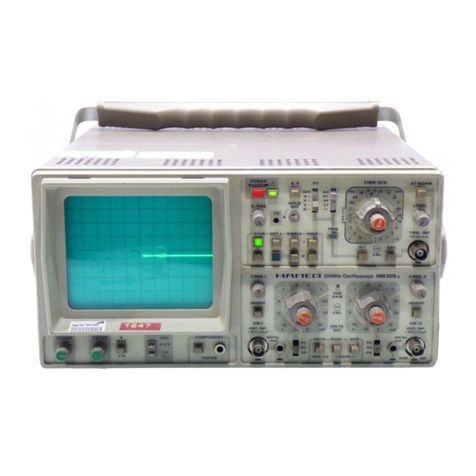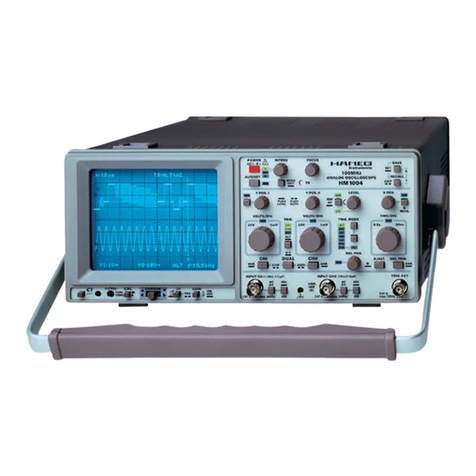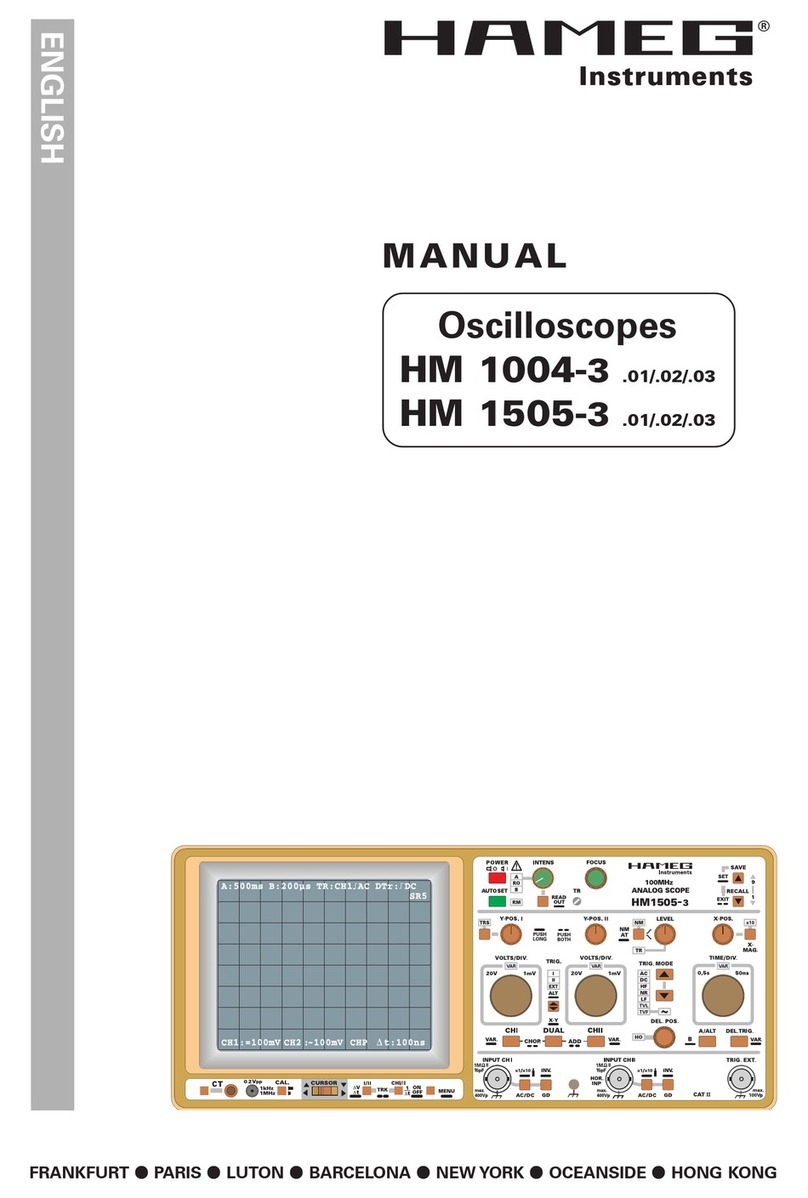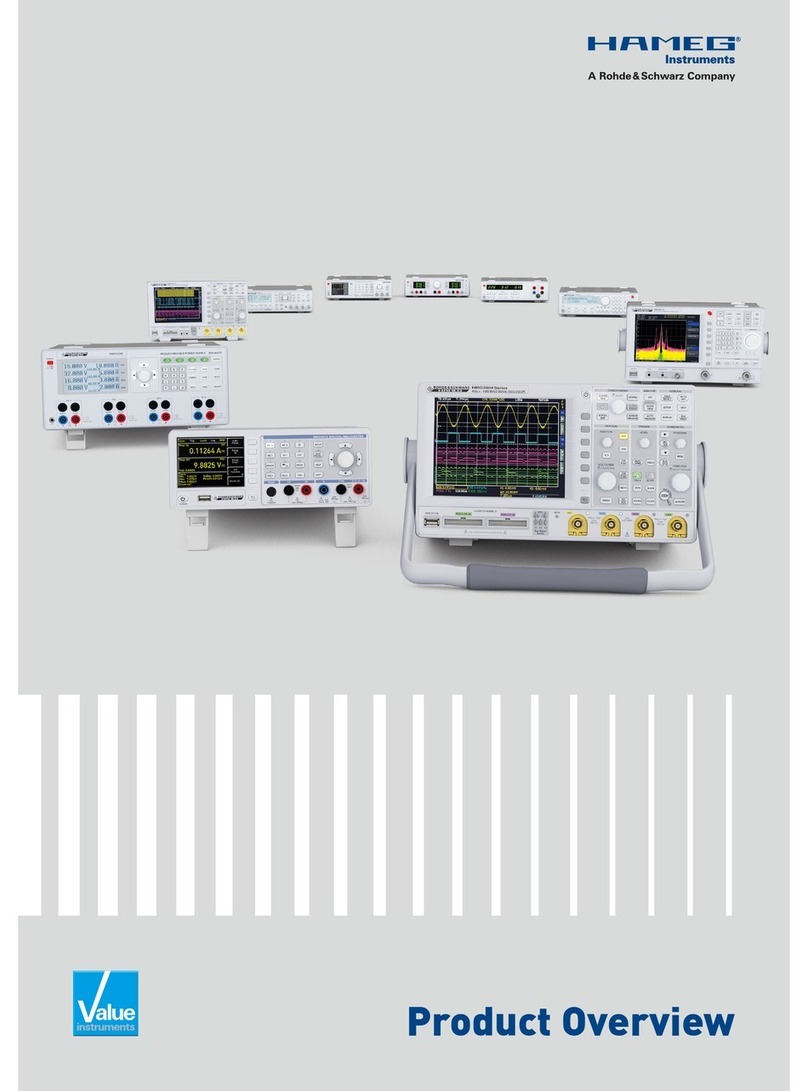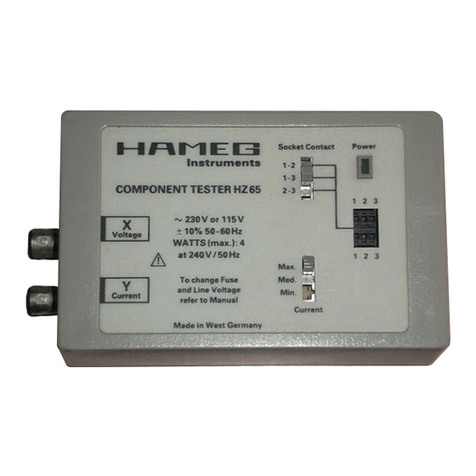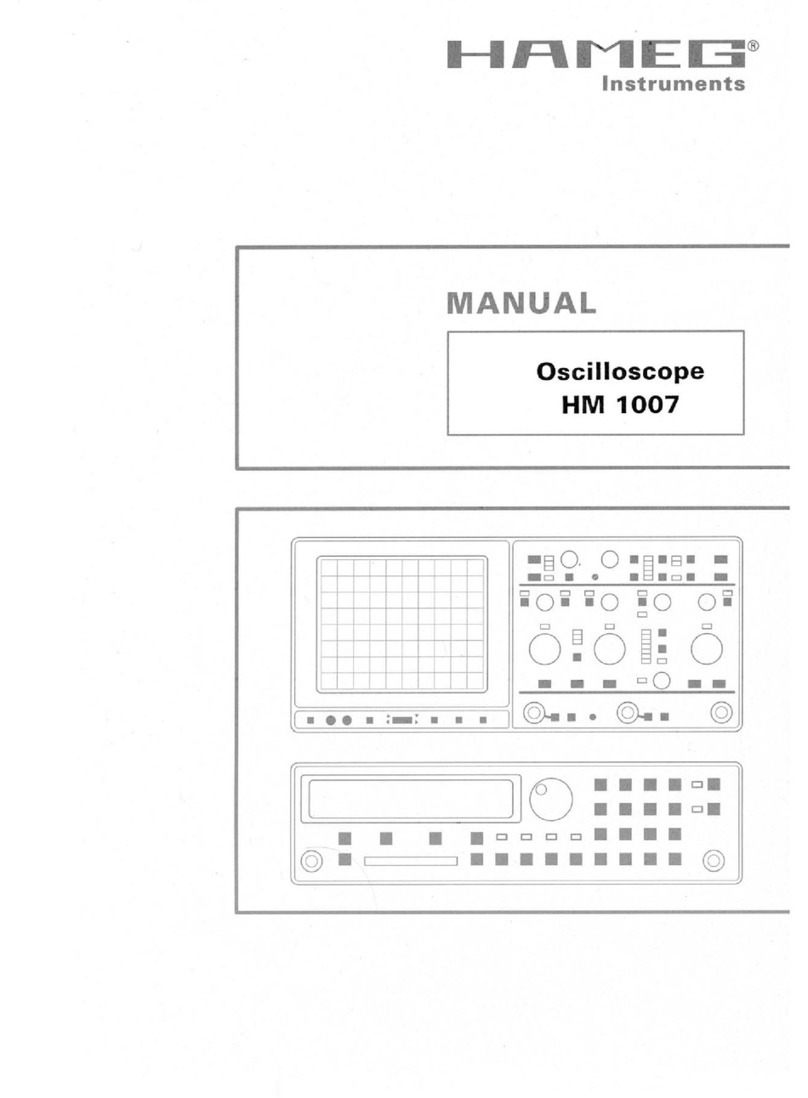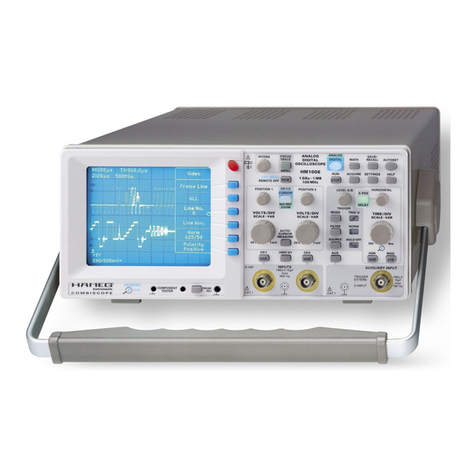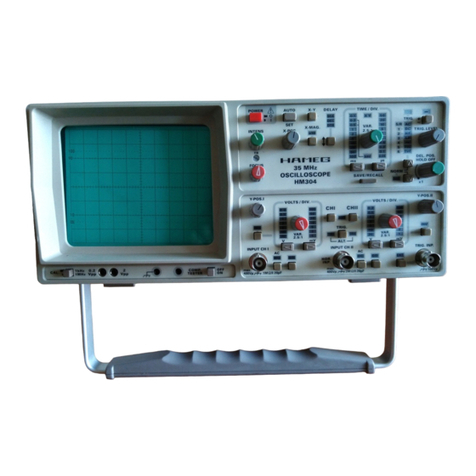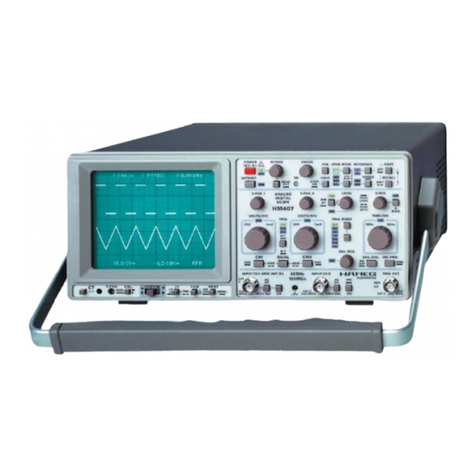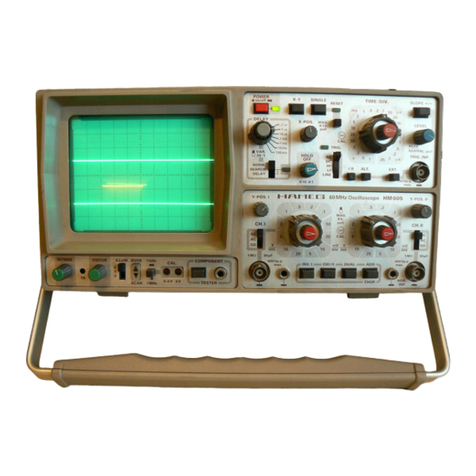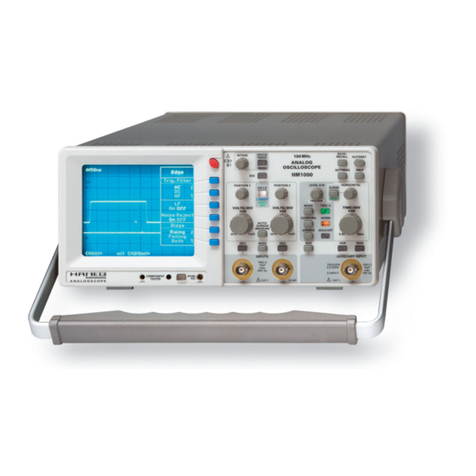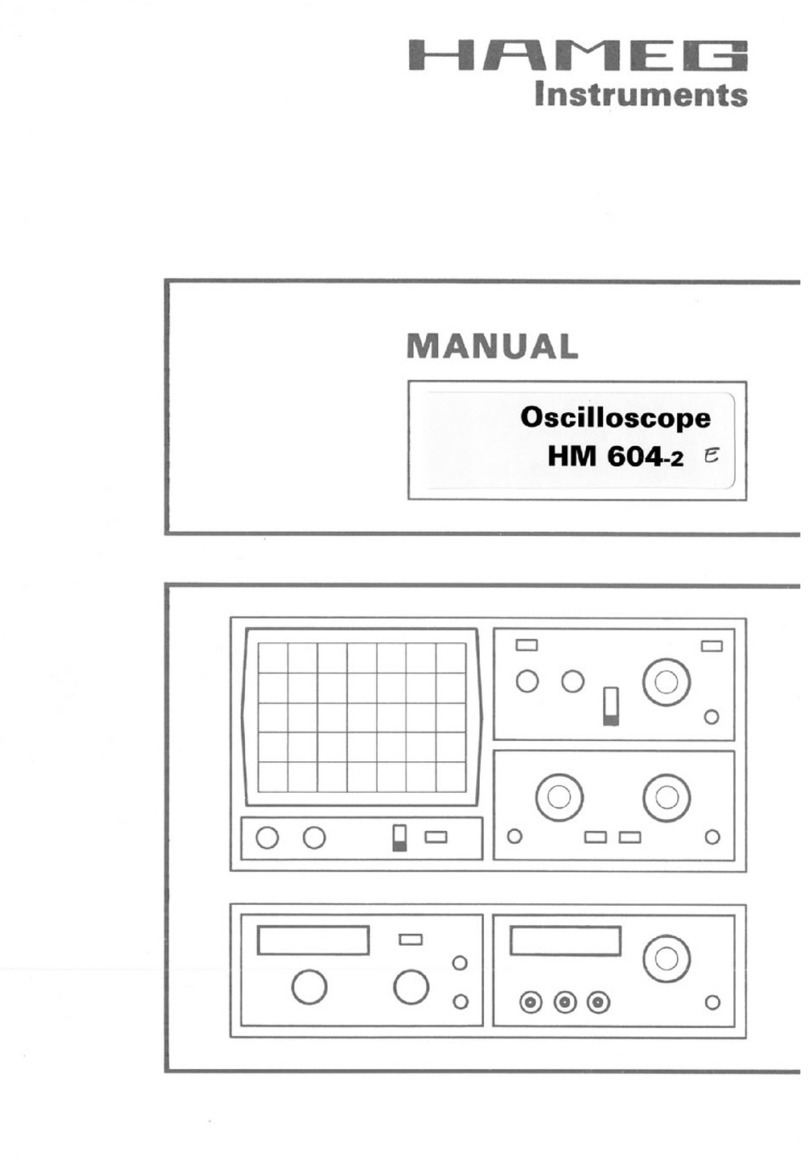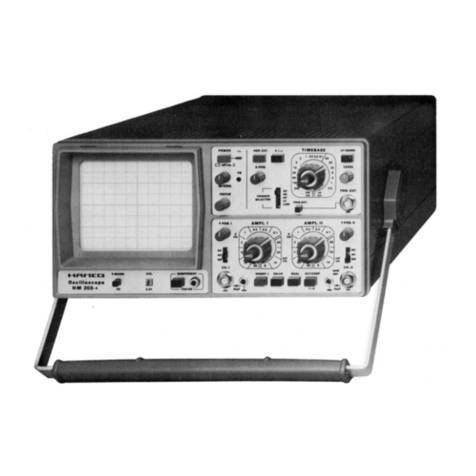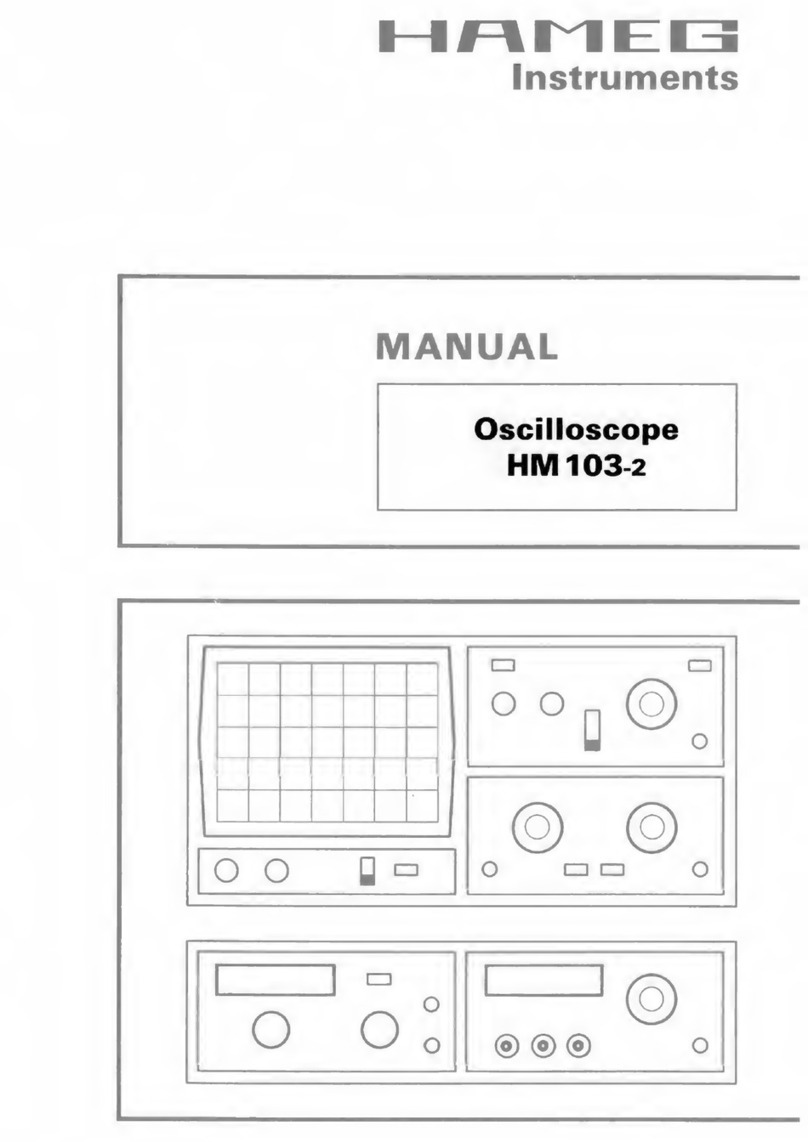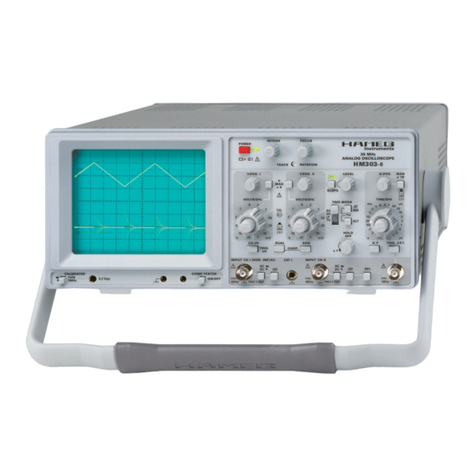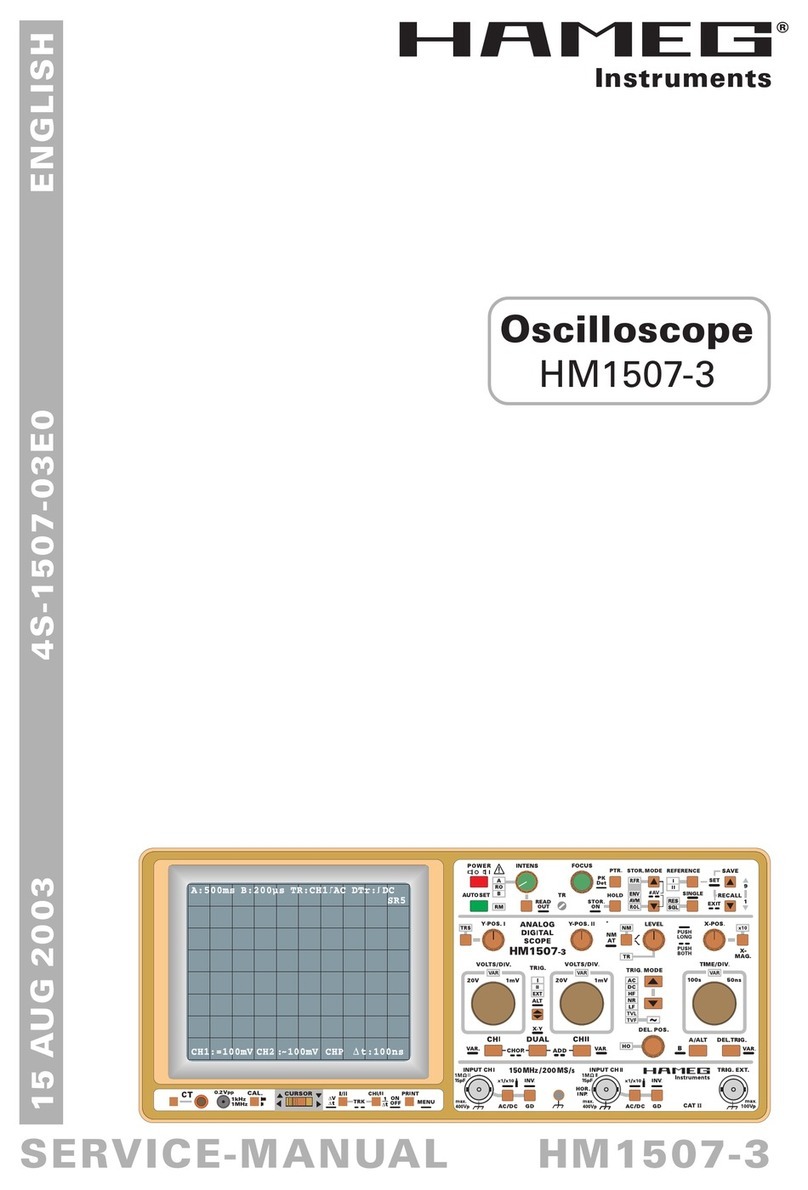
Subject to change without notice 7
Operating conditions
The instrument has been designed for indoor use. The
permissible ambient temperature range during operation
is+10°C(+50°F)...+40°C(+104°F).Itmayoccasionallybe
subjected to temperatures between +10°C (+50°F) and -
10°C(+14°F)withoutdegradingitssafety.Thepermissible
ambienttemperaturerangeforstorageortransportationis
-40°C (-40°F) ... +70°C (+158°F). The maximum operating
altitude is up to 2200m (non-operating 15000m). The
maximum relative humidity is up to 80%. If condensed
water exists in the instrument it should be acclimatized
before switching on. In some cases (e.g. extremely cold
oscilloscope) two hours should be allowed before the
instrumentisputintooperation.Theinstrumentshouldbe
kept in a clean and dry room and must not be operated in
explosive, corrosive, dusty, or moist environments. The
oscilloscope can be operated in any position, but the
convection cooling must not be impaired. The ventilation
holes may not be covered. For continuous operation the
instrument should be used in the horizontal position,
preferably tilted upwards, resting on the tilt handle.
The specifications stating tolerances are only valid if
the instrument has warmed up for 30 minutes at an
ambient temperature between +15°C (+59°F) and
+30°C (+86°F). Values without tolerances are typical
for an average instrument.
Warranty
HAMEG warrants to its Customers that the products it
manufacturesandsellswillbefreefromdefectsinmaterials
and workmaship for a
period of 2 years
. This warranty
shall not apply to any defect, failure or damage caused by
improperuseorinadequatemaintenanceandcare.HAMEG
shall not obliged to provide service under this warranty to
repair damage resulting from attempts by personnel other
than HAMEG represantatives to install, repair, service or
modifytheseproducts.Inordertoobtainserviceunderthis
warranty,Customersmustcontactandnotifythedistributor
whohas sold the product. Each instrumentis subjected to
a quality test with 10 hour burn-in before leaving the
production.Practicallyallearlyfailuresaredetectedbythis
method. In the case of shipments by post, rail or carrier it
is recommended that the original packing is carefully
preserved. Transport damages and damage due to gross
negligencearenotcoveredbytheguarantee.Inthecaseof
acomplaint,alabelshouldbeattachedtothehousingofthe
instrumentwhichdescribesbrieflythefaultsobserved.Ifat
the same time the name and telephone number (dialing
code and telephone or direct number or department
designation)isstatedforpossiblequeries,thishelpstowards
speeding up the processing of guarantee claims.
Maintenance
Variousimportantpropertiesoftheoscilloscopeshouldbe
carefully checked at certain intervals. Only in this way is
it largely certain that all signals are displayed with the
accuracy on which the technical data are based. The test
methods described in the test plan of this manual can be
performed without great expenditure on measuring
instruments. However, purchase of the new HAMEG
scope tester HZ 60, which despite its low price is highly
suitablefortasksofthistype,isverymuchrecommended.
The exterior of the oscilloscope should be cleaned
regularly with a dusting brush. Dirt which is difficult to
remove on the casing and handle, the plastic and
aluminium parts, can be removed with a moistened
cloth (99% water +1% mild detergent). Spirit or was-
hing benzine (petroleum ether) can be used to remove
greasy dirt. The screen may be cleaned with water or
washingbenzine(butnotwithspirit(alcohol)orsolvents),
it must then be wiped with a dry clean lint-free cloth.
Under no circumstances may the cleaning fluid get into
the instrument. The use of other cleaning agents can
attack the plastic and paint surfaces.
Protective Switch-Off
This instrument is equipped with a switch mode power
supply. It has both overvoltage and overload protection,
which will cause the switch mode supply to limit power
consumption to a minimum. In this case a ticking noise
may be heard.
Power supply
Theoscilloscopeoperatesonmains/linevoltagesbetween
100VAC and 240VAC. No means of switching to different
input voltages has therefore been provided. The power
input fuses are externally accessible. The fuseholder is
located above the 3-pole power connector. The power
inputfusesareexternallyaccessible,iftherubberconector
is removed. The fuseholder can be released by pressing
itsplasticretainerswiththeaidofasmallscrewdriver.The
retainersarelocatedontherightandleftsideoftheholder
andmustbepressedtowardsthecenter.Thefuse(s)can
thenbereplacedandpressedinuntillockedonbothsides.
Useofpatchedfusesorshort-circuitingofthefuseholder
isnotpermissible;HAMEGassumesnoliabilitywhatsoever
foranydamagecausedasaresult,andallwarrantyclaims
become null and void.
Fuse type:
Size 5x20mm; 0.8A, 250V AC fuse;
must meet IEC specification 127,
Sheet III (or DIN 41 662
or DIN 41 571, sheet 3).
Time characteristic: time-lag.
Attention!
There is a fuse located inside the instrument within
the switch mode power supply:
Size 5x20mm; 0.5A, 250V AC fuse;
must meet IEC specification 127,
Sheet III (or DIN 41 662
or DIN 41 571, sheet 3).
Time characteristic: fast (F).
This fuse must not be replaced by the operator!
